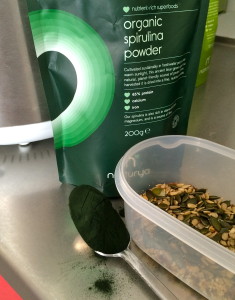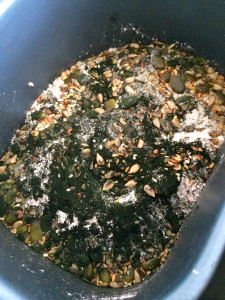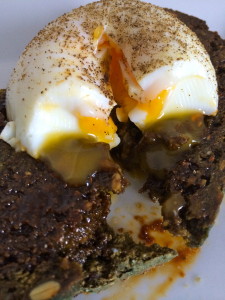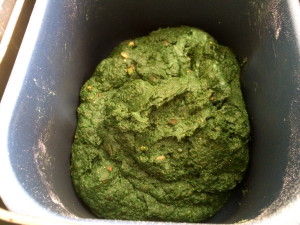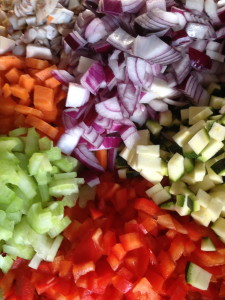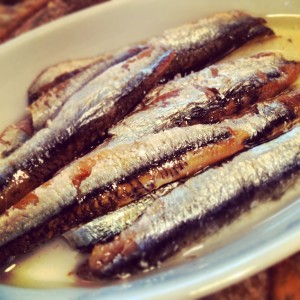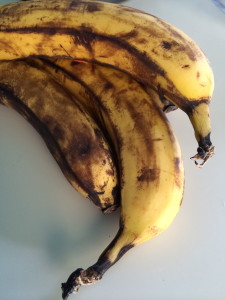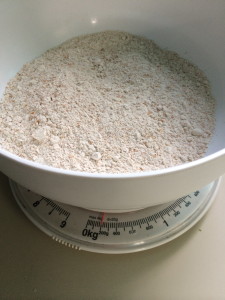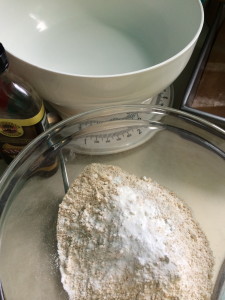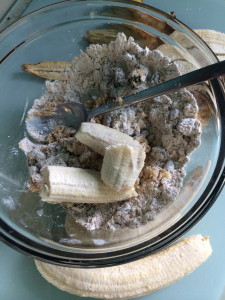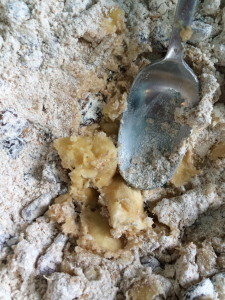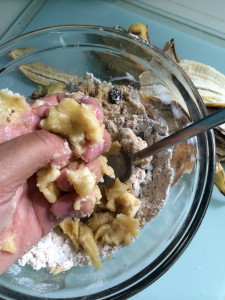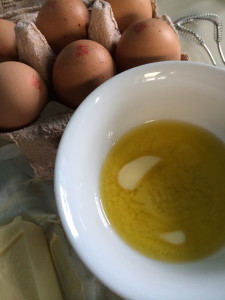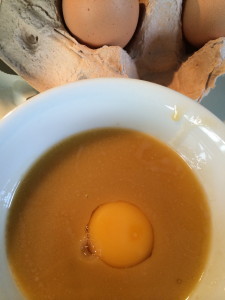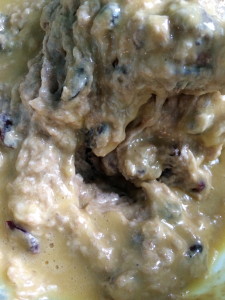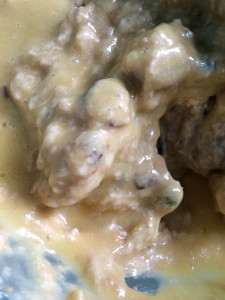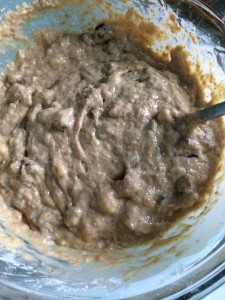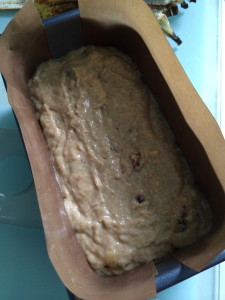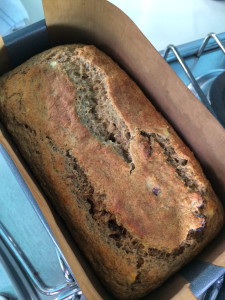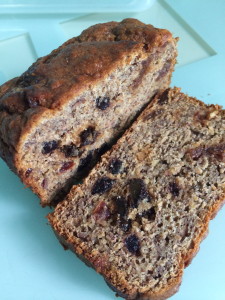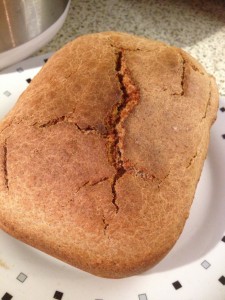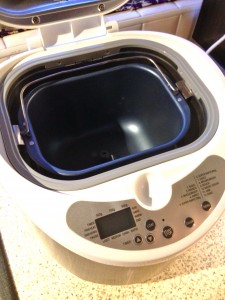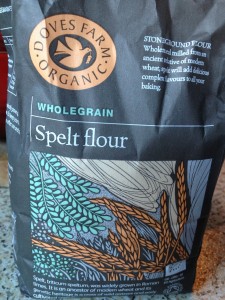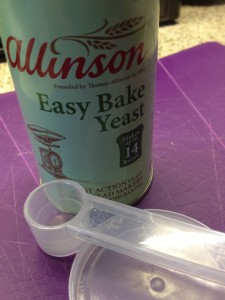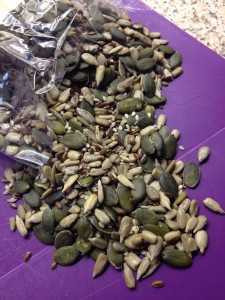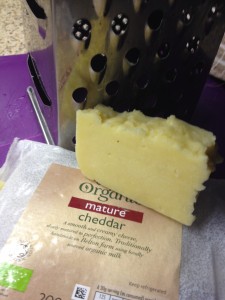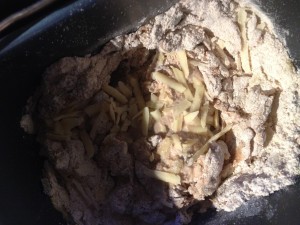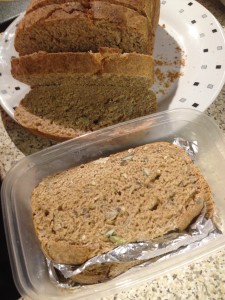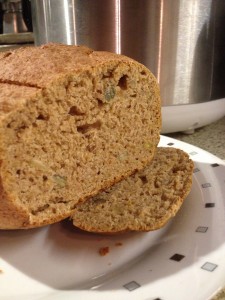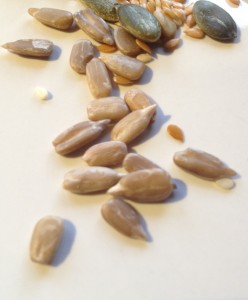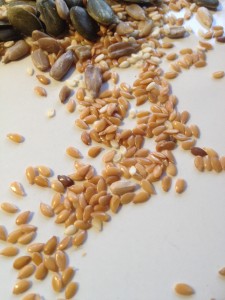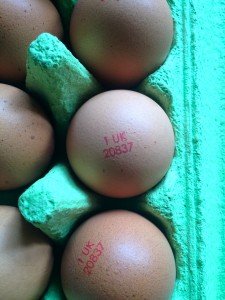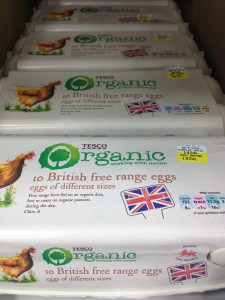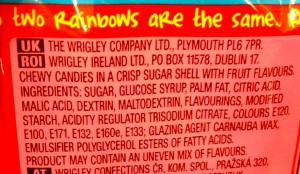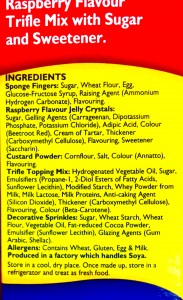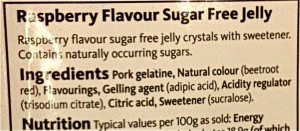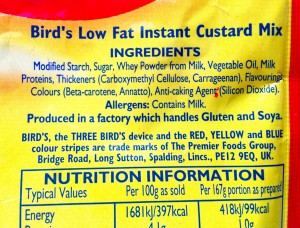Food additives are defined as natural or synthetic substances used in the commercial processing of food in order to preserve, add flavour, colour and/or texture. Home made food is eaten straight away or further preserved by freezing, but commercially produced foodstuffs need to have a longer shelf life for purposes of transportation and storage. Bacterial growth would ‘spoil’ most foods long before they arrived in the supermarkets, let alone your fridge or cupboards, without additives.
Food additives are closely controlled by EU law and there is an extensive process through which the additive has to go to be placed on the list of allowable substances. An argument often put forward is that if microbes are killed, or at least their growth slowed, by these preservatives then what are they doing to the cells in our body?! EU regulation is very strict and rigorous testing is used to determine whether there is any danger to humans on any level as well as the projected long-term use. The ADI (Allowable Daily Intake is then further reduced by a safety factor of (usually) 100. Some additives are considered so safe they don’t even have an ADI however. So, those that do have ADI’s can be eaten at will due to the safety factor? Or should we be circumspect about the potential bioaccumulation of the strictly controlled additives especially? Once a substance has passed through the EU testing process it is given an E number. This approval is then monitored and is also reviewed in line with any emerging scientific data.
The E stands for Europe, which really goes some way to demystifying the whole shebang. When I first became aware of E numbers, and probably ever since I’ve heard the name, there has been a negative connotation to them. Hyper active kids, headaches etc. I’ve always supposed this to be true as I’m sure many other people have too. But do they really deserve such condemnation?
Antioxidants E – numbers from 300-399
When foods are exposed to oxygen they begin to break down and decay (oxidation) and this causes discolouration, rancidity and can change/destroy the nutritional value of the item (e.g. they are used to prevent vitamins combining with the air and being destroyed). Antioxidant additives are used to stop or delay these processes. Foods made using fats or oils are likely to contain antioxidants too even if they are low in fat, as they help prevent decomposition especially when unsaturated fats are involved. The decomposing fat reacts with the oxygen creating the release of peroxides which we know by that characteristic rancid fat smell. Grim…
Many processed and prepackaged products contain an antioxidant; a majority contain citric acid (although vitamin C** (ascorbic acid/E300) is also widely used). Citric acid (which occurs naturally in fruits such as lemons) is used extensively to prevent discolouration, help increase the antioxidant effects of other substances and, in some cases, help regulate the PH balance (marmalade, jellies etc). Ascorbic acid is used to prevent discolouration but largely to replace vitamin C**, or add it back in to, any products where it might have been lost in processing or needed for an extra vitamin boost to the product (fruit juices etc. especially orange juice).
**However, this is contentious (isn’t everything?!) as many noted experts have pointed out that added elements such as ascorbic acid, retinoic acid and types of tocopherol (…er…sorry getting carried away!) I mean, added elements labelled as vitamin C, vitamin A or vitamin E, are not the actual vitamin at all but just a lab created isolation of them (synthetic versions needed to replace the naturally occurring versions lost during processing – especially vitamin C which is destroyed by heat). The essential theory being that vitamins are complex compounds that need to work within a set of multi level parameters and so creating an individual molecular compound from them might well work as a preservative or antioxidant etc. but does not therefore consequently also work within the body as a fully fledged vitamin. I.e. you’re getting the vitamin just not any benefit. The American company ‘Real C’ use the analogy: ‘If you compare Vitamin C to an egg, ascorbic acid would be just the egg shell with nothing inside’. Hmmm…
There are only a few available to producers in the EU and the most popular/frequently used in processed foods are:
- Ascorbic acid (vitamin C/E300)
- Citric acid (E330)
- BHA (butylated hydroxyanisole/E320)
- Tocopherols (vitamin E group/E306-309)
BHA and BHT are considered safe in the small doses used by the food industry (for the protection of fats and oils in foods) as they perform better at high temperatures than their natural equivalent vitamin E, but they remain contentious to pressure groups.
Synthetic and natural versions are often used in combination as this can increase their effectiveness. The arguments for the inclusion of antioxidants extend past their usefulness for food preservation etc., but to their reported use in the body for fighting free radicals. These ‘unpaired’ electrons are a danger as they ‘attack’ other molecules to gain a pairing. Antioxidants, vitamin C and vitamin E especially, stabilize these electrons by ‘donating’ one of theirs and as they are stable in either state (paired or unpaired) they do not become a free radical themselves. Increasingly, however, the results from major clinical trials are claiming that too many antioxidants in the body can be dangerous. A good intake is found in balanced, varied diets with fruit and vegetables, but the imbalance forms when the ‘added’ antioxidants are also factored in from processed and fortified foods. Some of these research reports are arguing that some antioxidants do indeed become, at least temporarily, radicals as they are only neuralised by another member of the antioxidant team. Again, this supports the need for a balanced diet of varied antioxidants to ensure there is no imbalance in the levels of a particular antioxidant, which might leave the body vulnerable without enough other antioxidants to restore the balance. Think on…
MAP or EMAP (Modified Atmospheric Packaging or Equilibrium Modified Atmospheric Packaging) are further examples of antioxidant additives at work. The process essentially replaces the oxygen within the sealed packaging (meats, seafood, crisps, salad bags etc.) with higher levels of CO2 (anti-bacterial and anti-fungal) and Nitrogen (inert gas used as a filler) and used extensively to prevent further ripening or spoilage and discolouring. Which also explains why the salad ‘goes off’ so quickly after the bag is opened – the rush of oxygen begins to decompose the leaves immediately.
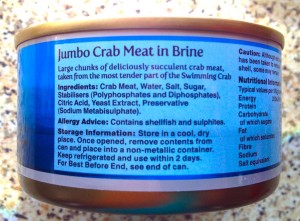
Preservatives – E numbers 200-299
Various ways to make food last longer have been employed throughout history. Unless another method of preserving the food has been used, like freezing or canning, then any food that has a clearly prolonged shelf life is likely to include preservatives. More traditional preservatives such as sugar, salt and vinegar are still used to preserve some foods but just as likely is some kind of added (probably synthetic) preservative. Most are added to prevent the growth of molds and yeasts but they have some anti-bacterial properties too.
Microbes are everywhere. They are in the air, in the earth, inside our bodies and in the food we eat. Microbes will multiply in the right atmosphere by their millions, and in a really short time, so the certain ones that break down foods are the ones the preservatives are attempting to stop or at least slow them down. Different microbes react to different preservatives so there are many used in many everyday products and foods. Without them the food would not only deteriorate quickly it would also subsequently allow bacteria that cause deadly illnesses like botulism and salmonella poisoning to spread (especially in animal products).
A common example is that dried fruit (drying is a form of preserving in itself) is often treated with sulphur dioxide (E220) to stop further deterioration. One very important use of preservatives from a food safety angle is its use in processed meats such as ham, bacon, salami and sausages. They are usually treated with nitrite and nitrate during the curing process as bacteria in the meats can cause fatal food poisoning. It is often argued as an example of the benefit of preservatives, in fact, that the tiny ‘safe’ amount of the preservative used far outweighs the potential damage from the deadly bacteria’s they negate.
Many advantages are gained from adding preservatives and generally preserving food. It not only keeps food safer for longer from deterioration or poisonous bacteria, but this allows for increased availability of out of season produce or items that are not native to be transported. Convenience for the consumer is another added value (although can mean the price of the goods is higher) and not only does this mean less wastage but also prevents the need for regular shopping, which is an advantage to many.
Most popular/frequently used in processed foods:
Benzoate preservatives:
- benzoic acid (E210)
- sodium benzoate (E211)
- potassium benzoate (E212)
- calcium benzoate (E213)
Sulfite preservatives (E220 – E224)
Nisin (E234)
Propionic acid (E280)
Nitrite preservatives:
- sodium nitrite (E250)
- potassium nitrite (E249)
Sorbic acid (E200)
Potassium sorbate (E202) – a synthetic preservative used for its antibacterial and anti-fungal properties.
There has been a lot of contention over the use of preservatives in food and there are a number of them in frequent use that have been targeted as not particularly good for us. They are regulated and maximum levels are set to well below amounts that could be deemed at all dangerous. Concern is largely over the accumulation of these ‘tiny, harmless amounts’ over time could increase the risk of cancer. Also, sugar and salt, whether added for flavour or to assist the preservative nature of processed foods, are also under fire. Their over bearing presence in processed food is a mainstay of the argument against it. I’ve discussed the horrors of sugar at length previously, here. And discussed salt here.
Common preservatives that are listed as those to avoid are nitrates (Potassium nitrite and sodium nitrite (E249 and E250) – preserve colour and help fight bacteria – stabilising and flavouring too AND nitrItes are considered worse than nitrAtes), sulphites (prevents discolouration), sodium benzoate (preserves against fermentation or acidification), BHA/BHT (preserves fats and oils – as an antioxidant) however without these there is no longevity to foods and there might be many more cases of food poisoning.
Some health experts associate nitrates and nitrites with asthma, headaches and nausea in some individuals. Sodium nitrite is said to converted to nitrous acid within the human digestive system, and this substance has been associated with high rates of cancer in laboratory animals. Reports show allergies to benzoic acid and sodium benzoate can cause severe reactions.
These preservatives are also argued to be safe (not only by the regulators and manufacturers but by some health officials too) and in some cases the preservative is actually promoted as beneficial. These are commonly used and include ascorbic acid (vitamin C)**, critic acid (and to enhance sour flavours) and sorbates (fight bacteria and yeast).
**see above
So, while it is more than likely ‘urban legend’ that bodies are not decomposing in the ground due to the large amount of preservatives eaten in a lifetime (although some sources are adamant it is true and it’s possible that they are adversely affecting the bacteria that usually break down the body after death) it is safe to say that they’re not exactly good for you. The body is still required to break down the chemical and foreign compounds and it would really rather not have to do it too often…and research shows the digestive system struggles to extract any nutritional value from highly preserved foods.
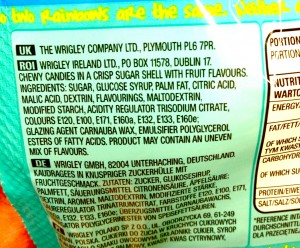
Food colouring E – numbers from 100-199
Colours are added to foods to make them look more appealing or more like the colour that consumers associate with that food. ‘We taste with our eyes’ it is said to describe the results of tests that show consumers thought something tasted better if it was the expected colour. They are also used to replace the natural colour lost during food processing or storage, to enhance the natural colour or to make products a consistent colour. They are even used to give a colour to an item that might otherwise be colourless like the Skittles above. Some groups argue that adding colour is unnecessary and misleading as well as raising concerns over their safety.
The EU laws currently allow 45 colours and also control what foods they are used in and maximum amounts allowed – usually extremely small amounts in all cases. The EFSA (European Food Safety Authority) tests for safety (and re-evaluates these results) and issues the ADI’s.
Colours commonly used:
- Curcumin (E100), a yellow colour extracted from turmeric roots.
- Plain caramel (E150a), which is used in products such as gravy and soft drinks
- Riboflavin (vitamin B2 – E101)
- Beta-carotene (E160a)
- Amaranth (E123)
Colourings for food are either synthetic, created from natural sources or ‘nature identical’. Natural food colourings come from plant sources such as fruit skins, vegetables, grasses and roots. The red colourant carminic acid (E120/cochineal) comes from the dried and crushed bodies of a type of insect.
Manufacturers often prefer synthetic colours as they are stable and consistent, often brighter than the original, and usually cheaper to make. It also means a colour like, the above-mentioned carminic acid, can be recreated without the inclusion of the insects! An added advantage is that the synthetic colours need no further processing to be added to foods as they are water soluble as opposed to the oil soluble natural and nature identical colours which need a further processing stage to be useable.
However some colours, especially those called the ‘azo dyes’ are associated by some pressure groups to behavioural problems in children (especially ADHD) and others with skin problems and certain cancers. The UK Food Standards Agency requires a mandatory warning of the presence of six artificial colours (that combined with the preservative sodium benzoate have been linked to increased hyper activity in children), passed a voluntary ban(!) and publish a list of brands that produce items without these colours.
EFSA reduced the ADI of these three of the six most contentious colours too:
- Sunset yellow – E110 – typically found in orange flavoured drinks and cordials, apricot jam, marmalade and packet soups.
- Ponceau 4R – E124 – (banned in the US as a result of its link with cancers). Used in dessert toppings, jellies, trifles, soups and salami.
- Quinoline Yellow – E104 – used to dye smoked haddock (an alarming yellow colour!) and egg products like scotch eggs. But more typically found in lipsticks and some medications
However, it did not reduce these three:
- Carmoisine – E122 – used in jams, yoghurts and jellies.
- Tartrazine – E102 which is the colour most strongly linked to hyperactivity in kids. Tartrazine is actually a yellow dye and can be found in a lot of yellow coloured foods (such as ice cream) and is the base for the creation of many other colours (used as a primary yellow).
- Allura red – E129, typically found in sweets, soft drinks but also in medicines.
The research and studies conducted have proved to be inconclusive regarding any links to problems caused by these colours at the amounts allowed etc. As with any of these issues if you are concerned about the potential harmful effects then it’s best to avoid the foods with any substance of concern contained in them.
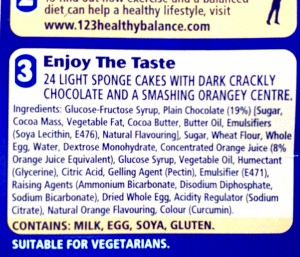
Emulsifiers E numbers 400-499
Emulsifiers are the chemicals needed to create an emulsion. Therefore an emulsifier is an additive that keeps two substances, which would usually naturally separate from each other, mixed. In food this is usually oil and water. There are oil-in-water or water-in-oil versions used*. They are used in many food products and are vital for the texture, ‘conditioning’, stability, even taste and indeed structure of the product, many of which would look very unappealing and/or be more vulnerable to spoiling without the emulsifier. Products like bread would be uneven (large holes would be visible) have less size and a drier texture without emulsifiers. Ice cream, margarine and mayonnaise are other foods that are completely reliant on emulsifiers for their structure and texture.
*(Due to emulsifiers having two distinct parts to themselves, one that likes to be in oil and one that likes to be in water, when they are added to either version (oil-in-water or water-in-oil) they will coat the appropriate element and keep it from clumping together and consequently separating into their own layer within the product. So, in essence, in water-in-oil emulsions the emulsifier coats the water molecules to prevent them separating from the oil and vice versa in oil-in-water emulsions).
Nature has many perfect emulsions such as the usually quoted example of milk, where the fat molecules are perfectly suspended in the surrounding aqueous solution. These are usually some form of protein or phospholipids (enables oil-in-water emulsion – e.g. lecithin)
Commonly used emulsifiers are either purified natural versions or synthetic versions that are ‘copies’ of the natural and have very similar structures. The most usual are:
- Lecithin (E322)
- Mono/di glycerides of fatty acids (E471)
- Esters of monoglycerides of fatty acids (E472a-f)
Gelling agents, thickeners and stabilisers
Similarly to the emulsifiers these are used to create shape and texture and therefore make the food look and ‘feel’ good. Thickening and stabilizing additives work with the emulsifiers to do this, especially in water-based products that would be runny and/or unappealing without them, or would deteriorate during processing, transportation or cooking. The longevity and regularity of the structure of processed foods relies on these additives and indeed marks the key difference between what we make for ourselves, without these additives, and the foods we buy fully expecting long shelf-life, the ability to freeze and store etc.
Without gelling agents many jams, jellies etc. would never set and remain stable (pectin added), fruit pie fillings would become runny and soak through the pastry long before reaching a consumer, and their use in soya protein products ensures that the soya product remains in tact even at high cooking temperatures.
Gelatine provided a key way to gel and set foodstuffs for many years but the animal source means that more often all-dietary issue inclusive alternative options are used such as carrageenan. Gelatine is made by boiling animal carcasses (all bones and tissue) and the collagen turns to gelatin that can then be used as a powder or in sheets. Its effectiveness is also reduced by the presence of acid so pectin works better with high fruit content items such as jam.
The most commonly used are:
- Gum arabic (E414) from plant secretions (sap of the acacia tree)
- Guar gum (E412) extracted from guar beans
- Locust bean gum (E410) from the endosperm of seeds of the carob tree
- Xanthan gum (E415) from fermenting glucose or sugar
- Agars (406) extracted from specific red algae
- Carrageenan (E407) extracted from several types of, usually farmed, red seaweed (as used in the jelly crystals element of the trifle mix above*)
- Pectin (E440) extracted from fruit such as citrus peel or remainder pulp from pressed apples
- Starch (E1401-1451) isolated from many different sources such as potatoes, corn, wheat and cassava and from chemical modifications
- Carboxymethyl cellulose (466) made through a process of reacting cellulose with acids (a very common thickener)
*The jelly crystals element of the trifle mix also uses two chemicals disodium phosphate (a multi functional additive which can be used as an acidity regulator, stabilizer, emulsifier and/or to prevent coagulation) and potassium chloride (usually used as a salt substitute and/or and flavour enhancer).
Specific thickening agents added (whether gelling agents and/or stabilisers) are also used to provide bulk and fibre as their gum like properties are tasteless, odourless and have practically no calorific content.
Flavouring and Flavour enhancers Flavour enhancers – E numbers 600-699
The brain creates taste as a combination of taste and smell and even sight. Consumers have a taste expectation based on visuals, olfactory aspects either before or during eating, and past experiences. The flavourings are added to actually impart flavour or enhance it (either by intensifying it or supporting it without adding another taste).
Common everyday flavour enhancers like salt and sugar are used to bring out the flavour in savoury and sweet foods by supporting the original taste. Others like lactic acid and citric acid are used to assist in the creation of specific sour or fermented tastes. The most famous (or infamous) flavor enhancer is monosodium glutamate/E621, which has been much vilified for it’s reported side effects (the so-called Chinese Restaurant Syndrome) although repeated testing has reported it as safe to use. The additional taste of umami (a Japanese scientist discovered this ‘taste’ and added it to the existing sweet, sour, bitter, salty – deriving it from seaweed) that MSG provides is a much sort after extra element in foods and other more ‘natural’ versions are available to provide this much desired flavour layer.
Lab created artificial sweeteners and other flavour enhancers routinely come under fire from health groups as they are thought to breakdown into toxic and neurotoxic chemical compounds when inside the body and increase the risk of disease in many parts of the body.
Natural flavourings are costly and often inefficient to extract so imitation copies are made and provide a cheaper, more stable (for longer term storage) and more reliably consistent additive. Flavourings are added to a wide range of foods and usually in very small amounts just to give a particular taste or smell. Flavourings are additives but they don’t have E numbers because they are controlled by different laws. An ingredients list will say if flavourings have been used (sometimes adding natural when appropriate), but individual flavourings are usually not named.
Nutritional additives – fortification
Fortification is the practice of adding micronutrients to food products. Directly to the product or to the animal feed that will therefore boost the content of the meat or other animal products as a consequence. The practice began in the West in the 1920’s with the USA ‘fortifying’ salt with iodine, with the 1930’s and 40’s seeing the mandatory addition of vitamin D to milk and various vitamin B’s to flour. The UK followed suit with the mandatory fortification of flour with calcium, iron, and B vitamins thiamine (1) and niacin (3) – none of which are required subsequently to be listed in the ingredients list. Similarly margarine is fortified with vitamins D and A. The idea was to provide a mass public health benefit when fears were that these nutritional elements were lacking in the general national diet (or within deemed vulnerable groups) by adding fortifying micronutrients to mass consumed products (bread, water, salt etc).
The FDF (Food and Drink Federation) gives three reasons for fortification – restoration, substitution and enhancement. The micronutrients are added back to white and brown flour (not whole grain) because they are contained in the bran that is removed during the milling and refining processes (restoration). Margarine has added vitamins to give it the similar levels to that of butter allowing for an alternative product with similar nutritional value (substitution). Many breakfast cereals have micronutrients added to them by the manufacturers to increase the commercial value (enhancement – and this must be revealed on the product label). Commonly fortified foods include breakfast cereals, soya milk, infant formula milks and many baby foods.
Vitamin D fortification is currently much discussed as the natural food sources are few and the risk from sun damage is of increasing concern to many. There has been much talk of the addition of folic acid into a variety of foods (the USA already does this) as it is often recommended as a supplement to certain sections of the population. However, it is this very ‘blanket delivery’ that the pressure groups, against such ideas, contest.
The supporters of fortified foods claim they can play an important role in a healthy balanced diet and provide the opportunity for easy and consistent intake as opposed to supplements that may be more randomly taken, and perhaps not at correctly metered delivery levels. Strict regulations control the additives both in the UK and overall by the EU. The fortification process can therefore be used to safely deliver various nutrients to the groups that need them without them needing to change their eating patterns and without further expense to the consumer (but you can bet your life the manufacturers will increase the unit price to compensate themselves). Developing countries have had huge success with these policies and in the UK, successful examples that are sited, as support for the system, are the decrease in key nutrient deficiency in women (folate, iron, vitamins D and B2 etc.), the eradication of iodine deficiency (provided by dairy foods and credited to the sterilisation process the cow’s teats go through), and the benefits to vegetarian and other specific diets groups of the fortification of foods to compensate for and/or enhance them to reclaim any potential short fall through the consumption of only plant sources.
The official governing bodies claim these fortifications have made huge differences to the rates of common deficiencies, however, pressure groups against the fortification criticise the lack of review of these laws (not reviewed since 1981) claiming that they are not relevant as the national diet has changed hugely since their introduction (the war years that triggered the inclusion of calcium, for instance, were times of low dairy intake compared to now when the intake is high). These pressure groups also say that the milling process damages higher levels of nutrients than the industry claims and replacement vitamins are not as effective, and certainly not as natural (as discussed above in ‘antioxidants’), as the original the grains contained. Further criticism is that many manufacturers are being accused of using fortification as a way to promote and entice the buying of their processed foods which is in turn increasing the consumers intake of sugars, fats and salt.
Raising agents
Raising agents are additives (liquid or powder) that are there to ensure the product not only rises but also has an even texture. For instance, a well known raising agent, bicarbonate of soda/baking soda (E501) or technically sodium bicarbonate, reacts with the mixture around it (the acidity in it as well and the moisture) when heated and produces bubbles of gas (carbon dioxide) which expand and raise the mixture around it and then becomes encased in the mixture as it cooks and sets creating a uniform and stable structure and texture. Baking powder is bicarbonate soda and cream of tartar mixed (with a starch usually) to be a more all-in-one raising agent because the cream of tartar (E336(i) – a by-product of wine making) provides the acidic element needed to trigger the bicarb soda.
Natural processes like whipping air into egg whites or batter, sifting flours and rubbing fats into them all assist in the raising and structure of baked goods, and similarly using water to create steam during the baking process will raise the mixture around it up till it sets when cooked, such as the process used in making Yorkshire puddings. Yeast is another natural raising agent multiplying in heat and fermenting therefore forming the carbon dioxide and alcohol that will expand and burn off in the cooking process leaving a firm structured and well risen product…well, that’s the theory…
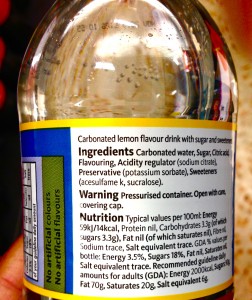
Sweeteners
Sweeteners were developed to replace sugar after sugar was discovered to be the cause of tooth decay and linked to obesity related diseases. The idea behind them being to provide the sweetness but not the same energy intake and still give the sweet element to taste that many people are used to, and perhaps even addicted to. Sweeteners cannot completely replace sugar as the sugar element in some processed foods, like cakes, also performs other functions such as retaining humidity (humectant) and provides bulk and structure to the finished product.
Typical products that use sweeteners heavily are:
- Sodas, alcoholic and non-alcoholic drinks etc.
- Sweets/candy – chewing gum and mints are reliant on sweeteners.
- Desserts, ice creams etc.
- Many baked goods and processed foods both sweet and savoury, including dressings and sauces
- Breakfast cereals
- Many medicines
Commonly used sweeteners are: (they are gauged for their sweeteness against sucrose – the chief compound in cane and beet sugars aka table sugar…yeah the white stuff that you all know I love to hate…!)
‘Intense’:
- Aspartame (E951) – sweetness value 200 times higher than sucrose.
- Aspartame-K (E950) – a synthetic compound that mixes well with other sweeteners to create either more complex taste or greater levels of sweetness. It has a sweetness value 300 times higher than sucrose.
- Saccharin (E954) – a synthetic compound that is rarely used alone now and 300 times sweeter than sucrose.
- Sucralose (E955) – the ‘strongest of sweeteners with sweetness value of 600 times that of sucrose.
‘Bulk’:
- Sorbitol (E420) – carbohydrate like structure but only just over half as sweet as sucrose. A preferred sweetener for diabetic purposes.
- Xylitol (E967) – created to match the sugar sweetness of sucrose so it is much sweeter than sorbitol. Used in similar quantities therefore to sugar and sold in shops in bags to use as such. It is a naturally occurring substance in many plants and suitable for diabetics and even heralded as an active anti-cavity aid as it prohibits the growth of bacteria (it’s chemical composition means bacteria and yeasts cannot make use of it to ‘feed’ themselves).
‘Artificial’ or ‘intense’ sweeteners like aspartame, saccharin, and acesulfame-K are many, many times sweeter than sugar and are only needed subsequently in very small amounts. Increasingly these are used in combinations to create ‘superior taste profiles’ which mirror the complexities of the natural taste of sugar and require fewer sweeteners over all. The defense of their use therefore notes that this not only creates tooth-friendly foods but also reduces calories significantly due to the minute amounts used.
‘Bulk’ sweeteners like sorbitol (used as a combination humectant, sweetener and emulsifier), xylitol and maltitol (E965 – used as a combination sweetener, humectant and stabilizer) can have from 35% – 100% similar sweetness to sugar and so they are used in similar amounts to sugar. They are also tooth-friendly and are considered suitable (or at least more suitable) for diabetics as they have a significantly reduced glycemic index, although they have laxative properties if consumed in large amounts resulting in mandatory warnings on the products packaging.
Sweeteners also became popular as part of weight loss programs. Sugar began to be replaced with non-calorific or reduced calorie sweeteners in many popular items (this was also a boon for diabetics (especially sorbitol) as mentioned above).
However, the opposition to sweeteners is strong with pressure groups claiming no good and proper evidence exists to prove that sweeteners do anything whatsoever to help weight loss, especially. In fact, they say the evidence is strongly available to show the opposite. In essence, the theory is that sweeteners cannot trigger the ‘reward centre’ in the brain in the same way as sugar and then the brain triggers further appetite stimulation to intake the calories (especially carbohydrates) that the sweeteners have created a desire for (in the mouth). Similarly some anti-sweetener groups say that the brain triggers insulin release just based on the expectation that the sweetener creates in the mouth, regardless of the reward centre, potentially causing insulin spikes etc. More on this in a future post…
Some sweeteners have been linked to cancers in lab animal testing research further raising concerns over their safety especially cumulatively when eaten many times in many products throughout a day. Other noted issues are sleep and anxiety disorders, triggering epilepsy and interference with the progress and efficaciousness of medications – especially anti-depressants (sweeteners are often in medicines too). I’d say the evidence stacked against sweeteners (especially aspartame, aceslulfame-k, saccharin and sucralose) and their effects on fundamental body systems and functions are enough to avoid then until a convincing and conclusive study proves otherwise!
My previous missives (rants) about sugar are here and here!

Re the labeling of the Hartley’s jelly above with the following: ‘Contains a source of phenylalanine‘. Phenylalanine is considered an essential amino acid and needs to be taken into the body through diet (animal protein and dairy products contain good sources) and it is needed for vital neurotransmitter functions. However, it is said to be harmless to a majority and the warning is there to protect those with an inherited metabolic disorder that means they cannot tolerate it. It is present in aspartame (therefore Equal, NutraSweet etc.) and a further issue is the bioaccumulation of consuming many products containing phenylalanine. Intolerance aside phenylalanine is contested as anything from a mild anti-depressant to a laxative and blamed for hypertension and headaches.

